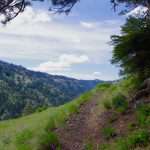By John Sparks, Volunteer, Trailkeepers of Oregon Distance: up to 10.6 miles / Elevation gain: up to 2,405 feet For an early summer excursion in Oregon’s northern Blue Mountains, try the well-graded Rough Fork Trail, which descends 1,800…
By John Sparks, Volunteer, Trailkeepers of Oregon
Distance: 9.0 miles
Elevation gain: 1,340 feet
Treat your eyes to a visual feast of green and turquoise as you hike through an old-growth forest along a magical river with deep pools. This hike on the Willamette National Forest’s Little North Santiam Trail #3338 is located in the Opal Creek Scenic Recreation Area. The route parallels the river with a trailhead at either end, but be prepared for quite a few ups and downs. The trail can generally be hiked all year; if you prefer solitude, avoid the summer, when the crowds converge on the river’s well-known swimming holes, especially those at Three Pools.
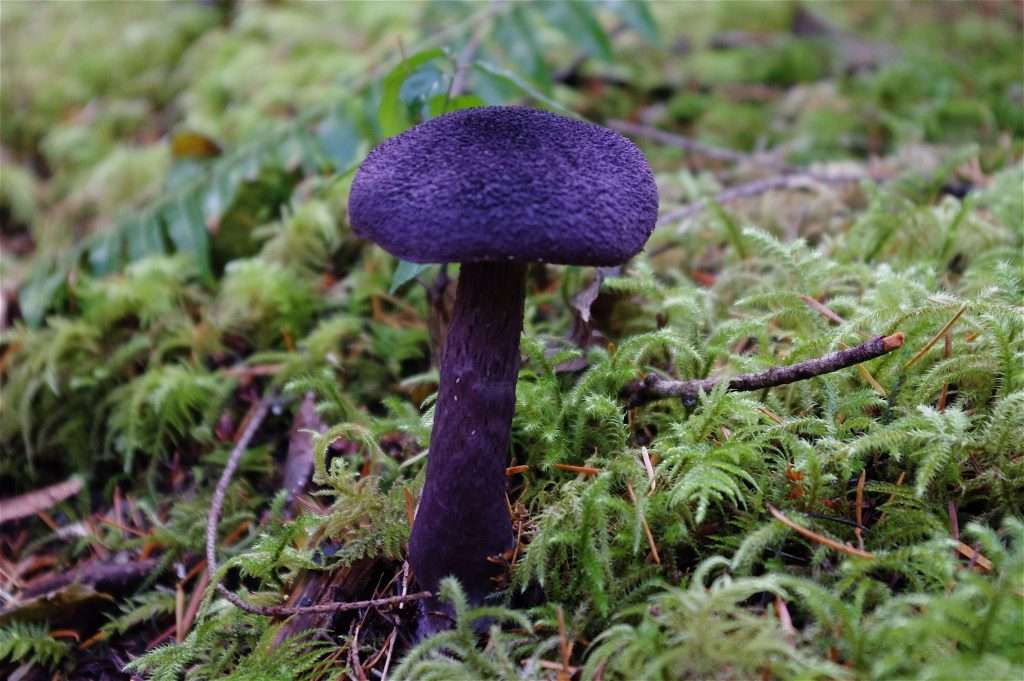
Violet cortinarius (Cortinarius violaceus) on the Little North Santiam Trail. (Photo by John Sparks)
The violet cortinarius (Cortinarius violaceus) is the darkest of our purple mushrooms. It is found across North America, Europe, and Asia, but there are few locations where it is common. The fungus develops mycorrhizal relationships with various tree species, seeming to prefer deciduous trees in Eurasia and conifers in North America. While edible, it has a bitter taste and is rarely consumed.
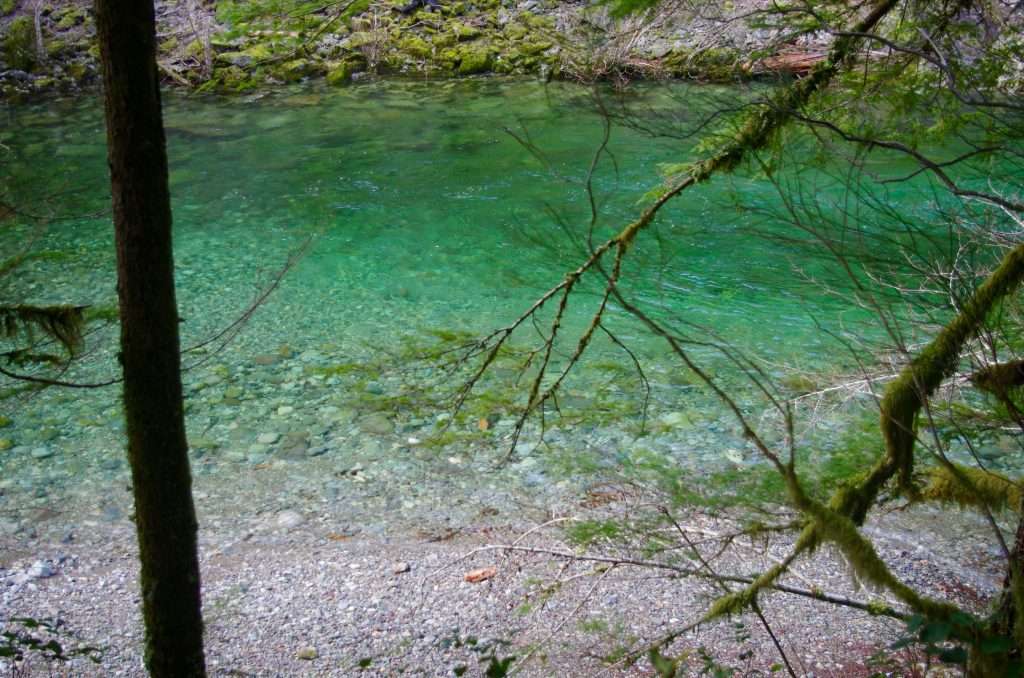
The pellucid waters of the Little North Santiam. (Photo by John Sparks)
The Little North Santiam runs down a glaciated valley where light-colored lavas of rhyolite and andesite have been exposed. The clear waters running over these bedrocks produce one of the prettiest river scenes in the Pacific Northwest. Veins of chalcopyrite, pyrite, and sulphide attracted miners beginning in 1860, and the area was heavily prospected in the 1920s and 1930s. Copper, lead, zinc, and silver were the principal minerals mined here. Small amounts of gold were also extracted. Due to the nature of the local ores, processing was difficult and expensive, and not one of the 150+ claims in the area ever turned a profit.
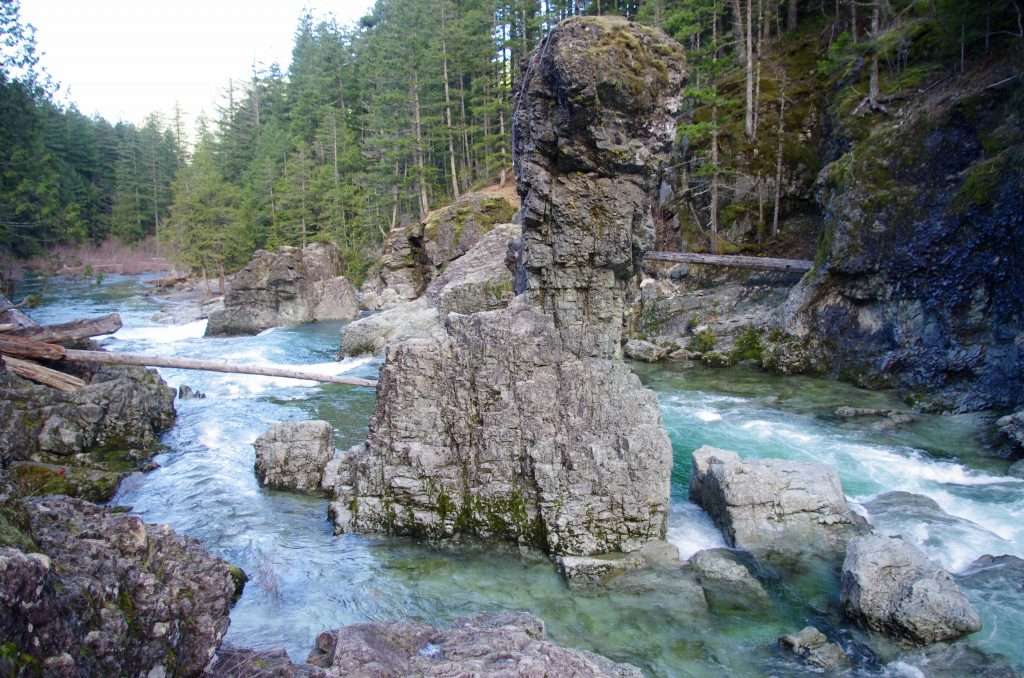
A rock pillar at Three Pools. (Photo by John Sparks)
A rock pillar stands sentinel over the Three Pools, popular swimming holes that have become major summer attractions. The attraction is so great that a 90-car parking lot (Northwest Forest Pass required) was constructed to accommodate the hordes. It is forbidden to park anywhere but the parking lot within half a mile of Three Pools, so when it gets full, you’ll need to go somewhere else. Summer use inevitably brings in trash, loose dogs, and shards of broken glass in the river.
The quieter side of Three Pools is the south bank of the Little North Santiam. Nine months of the year, you can hike this trail and enjoy a pleasant experience. You’ll be able to visit the craggy rock pillar and explore a marvelous grotto with two mouths nearby.
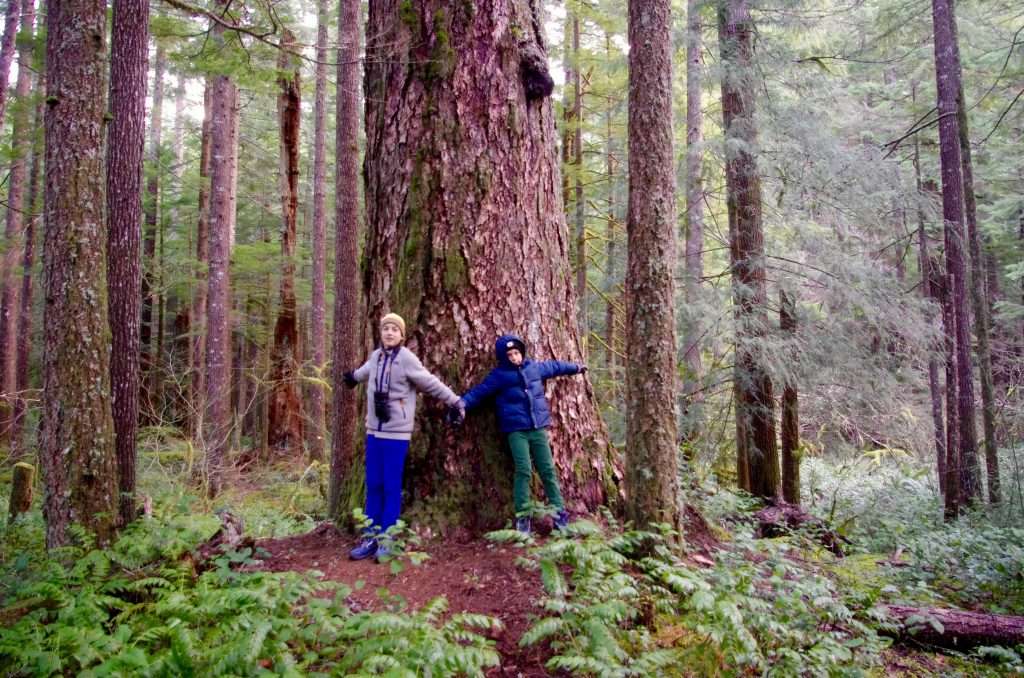
Old-growth Douglas fir on the Little North Santiam Trail. (Photo by John Sparks)
Tall old-growth Douglas firs dominate the woodland in the eastern section of the Little North Santiam Trail. The trees are several hundred years old and constitute a biologically diverse forest that is prime habitat for spotted owls, northern flying squirrels, and red tree voles. More than 100 species of mosses and lichens live on old-growth Douglas firs. At least 1,500 species of invertebrates have been found to live in stands of this size. Fallen trees and large standing snags are also a feature of this forest and support hundreds of distinctive life-forms. In addition, old-growth forests conserve nutrients in the soil and generally do not experience destructive erosion.
See the Little North Santiam Hike in the Oregon Hikers Field Guide for more details and trailhead information.
John Sparks: john.sparks@trailkeepersoforegon.org

